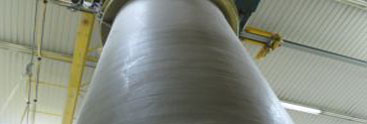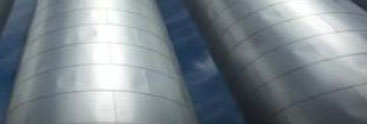BioCAST-NR1
BioCAST Nutrient Removal Technology
- Why Use BioCAST-NR1?
- Description of the Technology
- Nutrient Removal Capacity of BioCAST-NR1
- Competitive Advantages of BioCAST-NR1
Why use BioCAST-NR1?
In the field of wastewater treatment, the very high organic and nitrogen loads of wastewaters emerging from industrial and agriculture operations such as animal farms, slaughterhouses, textiles and food-processing factories render conventional treatment processes ineffective. The discharge of untreated or inadequately treated wastewaters to rivers and lakes is one of the major causes of water pollution and eutrophication, a process that depletes oxygen in the receiving waters, seriously threatening aquatic life. The simultaneous removal of organic carbonaceous compounds and nutrients, i.e. nitrogen and phosphorus, from high-strength and nutrient-rich wastewaters is required in order to produce effluents that conform to stringent environmental standards for effluent discharge.
Description of the Technology
BioCAST-NR1 is an innovative nutrient-removal technology for efficient and cost-effective removal of carbon, nitrogen and phosphorus from high-strength and nutrient-rich wastewaters such as those produced by agricultural and industrial activities or animal farms. This biological treatment system uses a multiplicity of zones with various environmental conditions in a single tank that contains both suspended and immobilized microorganisms, providing high biomass concentrations and high solid retention times (SRT) that have been shown to increase the efficiency of contaminant removal in biological treatment processes. The single-tank hybrid BioCAST-NR1 technology has a small footprint and a lower volume compared to similar integrated technologies that use combined immobilized and suspended-growth biological treatment. It offers an efficient treatment with reduced oxygen requirement and low sludge generation.
.
Because of its unique attributes, the BioCAST-NR1 technology presents a major breakthrough in the treatment of agricultural and animal wastewaters as well as high-strength industrial wastewaters since the very high carbon and nitrogen concentrations in these wastewaters often prohibit adequate treatment. Moreover, The BioCAST-NR1 technology may be combined with a solid-liquid separation process for effective separation of solids from liquid to produce a clear and well-treated effluent, conforming to stringent environmental standards for discharge into the surface waters.
.
BioCAST-NR1 can be easily implemented in an existing holding tank because of its simple internal design and the use of a single-tank. This treatment system contains three environmental conditions of aerobic, anoxic and anaerobic in order to support the growth and proliferation of different groups of microorganisms and the multiplicity of biochemical reactions involved in the removal of carbon, nitrogen and phosphorus contaminants. Combined anaerobic/anoxic/aerobic processes are frequently used in wastewater treatment systems in pilot, or full-scale operations. The presence of a diversified microbial population and different environmental conditions offered by the combined aerobic/anoxic/anaerobic systems are particularly needed for the removal of nutrients, nitrogen and phosphorus. However, combined systems are also used when high BOD/COD concentrations are present in the wastewater.
.
The simultaneous presence of suspended and fixed-film or immobilized microbial biomass in the BioCAST-NR1 technology produces high biomass concentrations and high cell retention times, particularly important to support high removal efficiencies of carbon, nitrogen and phosphorus, while decoupling the hydraulic retention time (HRT) from the sludge retention time, thus providing flexibility to deal with varying wastewater flow rates.
Nutrient Removal Capacity of BioCAST-NR1
The presence of anoxic and aerobic environmental conditions in the BioCAST-NR1 technology implies that this treatment system has the potential to remove excessive nitrogen by dissimilative biological processes in addition to the removal of COD. This is important if the concentration of nitrogen in the wastewater is to such an extent that it cannot be removed simply by assimilative processes, through the incorporation into the biomass. The presence of attached-growth or immobilized biomass increases the nitrogen removal capacity of the system even under cold temperatures by ensuring the retention of slow-growing microorganisms that are involved in the biological removal of nitrogen. The design and operation strategy of BioCAST-NR1 produce a high efficiency of nitrogen removal and eliminate the requirement for the addition of an external carbon source, often required during biological nitrogen removal in conventional treatment systems that use combined nitrification and denitrification processes for nitrogen removal. In addition to the removal of nitrogen, the presence of aerobic and anaerobic conditions and the alternating exposure of wastewater to these conditions offer the capacity of phosphorus removal by the enhanced biological phosphorus removal (EBPR) process.
Competitive Advantages of BioCAST-NR1
BioCAST-NR1 is an efficient, economical and easy-to-operate wastewater treatment technology. Compared to the existing nutrient removal technologies, BioCAST-NR1 has a simple design and low maintenance requirements and it is easy to operate and control even from remote distances. This technology has the capacity of treating wastewaters with considerably high concentrations of organic carbonaceous compounds and nutrients. This is due to the presence of both anaerobic and polishing aerobic environments, combination of suspended-growth and immobilized biomass that present high biomass concentrations, high cell adaptation and high solid retention times (SRT), and the adequately high hydraulic retention time (HRT) in the treatment system. The high capacity of BioCAST-NR1 in the simultaneous removal of carbonaceous contaminants and nutrients and its ease of operation make this technology extremely useful in the agricultural and animal waste treatment market.
.
Another advantage offered by this treatment system is that it operates under lower temperatures compared to the levels normally established under aerobic treatment operations such as activated sludge processes during the treatment of high-strength wastewaters. This is due to the presence of anoxic and anaerobic environments and the resulting generation of less heat by this treatment system. In general, the generated heat during anaerobic microbial processes is less than that produced during aerobic processes. Consequently, the degradation of carbonaceous compounds by anaerobic processes will considerably reduce heat generation during BOD and COD removal processes, preventing the rise of reactor’s temperature to prohibiting levels. This is particularly important during the treatment of wastewaters with high COD and BOD concentrations since the excessive rise of temperature will often deactivate the microbial biomass, seriously impairing the treatment process.
.
In addition, the volume of produced sludge in the BioCAST-NR1 technology is considerably lower than that formed in traditional treatment systems that use suspended microbial biomass. The low amount of sludge produced during the treatment process will be partly digested in the anaerobic zone of this treatment system and the rest will be removed on an occasional basis as waste sludge.
BioCAST-NR1 Benefits
from the following competitive advantages:Simplified tertiary treatment
Multi-phase biological treatment
Presence of a diversified group of both suspended and immobilized biomass
Enhanced microbial adaptation and improved tolerance to the variations of organic load
Production of considerably less sludge
Simultaneous removal of nitrogen and phosphorus
Reduced greenhouse gas generation (no methane, reduced nitrous oxide)
Increased tolerance to toxic shocks
Rapid sludge stabilization
Lower capital and operation costs
No external carbon source
Remote-control operation

Nutrient Removal Technology



